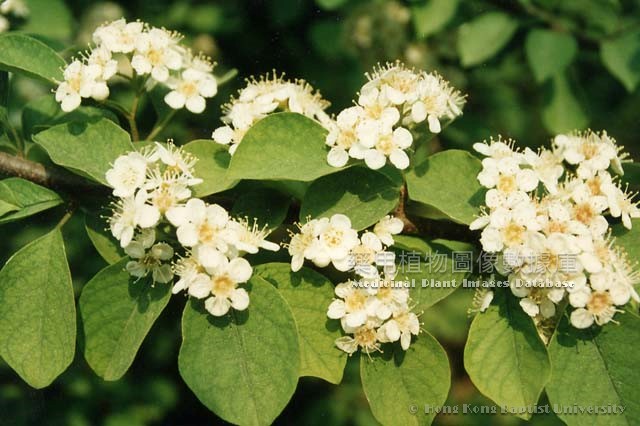|
Cotoneaster multiflorus Bge.

|
English Name |
Multiflorous Cotoneaster, Manyflower Cotoneaster, Manyflowered Cotoneaster, Flower Cotoneaster, Water Cotoneaster |
|
Latin name |
Cotoneaster multiflorus Bge. |
|
Family & Genus |
Rosaceae, Cotoneastor |
|
Description |
Deciduous shrubs, 2-4m tall. Branches slender and arched, branchlets red brown or brown, glabrous or with purple hairs when young, then smooth. Stipules linear, deciduous; petioles 3-8mm long, with soft hairs when young, then deciduous; leaves oval or rhombic ovate, apex acute or obtuse, base broad cuneate or round, surface glabrous, back side slightly flossy when young, then deciduous. Flowers numerous, white, lax cyme, total peduncle and pedicels glabrous or slightly pubescent; bracts linear, glabrous or slightly hairy; calyx tube campanulate, calyx lobes triangular, apex acute; petals expanded, nearly round, apex obtuse or emarginate, base with short claws, base of inner surface with white pubescence; stamens about 20, slightly shorter than petals; style is usually 2, distinct, shorter than stamens; upper end of ovary with soft hairs. Fruits nearly spherical or obovate, about 8mm in diameter, red, with 1 small stone composed of 2 carpels. Flowering: May to June, fruiting August to September. |
|
Distribution |
Growing in ravine or miscellaneous forests at altitude 1,200-3,000m. Distributed in Northeast, North and Northwest China, etc. The medicinal materials are mainly produced in Hebei, Henan, Shanxi, Liaoning and etc. |
|
Part Used |
Medical part: branches and leaves and fruits. Chinese name: Huixunzi. |
|
Harvest & Processing |
Collected branches and leaves from June to August, cut into segments, sundried; collected fruits in September and October, and sun-dried. |
|
Properties & Actions |
Bitter, harsh, cool.Cooling blood, arresting bleeding, detoxifying and curing wound. |
|
Indications & Usage |
Mainly indicated for gingival bleeding, hypermenorrhea.Oral administration: decocting, 3-9g. External application: appropriate amount, or baked out oil for application. |
|
Examples |
Burns and scalding injuries: an appropriate amount of bark of fresh cotoneaster, bake on fire to collect oil, and smear externally onto the affected lesions. |
|

